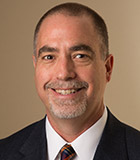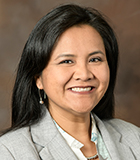Past recipients of AACP’s New Investigator Award reflect on the doors that opened thanks to the research grant.
By Kirsten F. Block, Ph.D.
For more than 30 years, AACP has provided seed funding for promising research faculty across the colleges of pharmacy. Although the grant program has gone by many names, what is currently the New Investigator Award (NIA) has maintained a common objective: to assist early-career pharmacy faculty in the development of an independent research program and provide a foundation for future extramural research funding success by enabling these faculty to generate preliminary data.
Over this program’s tenure, the NIA has funded nearly 500 principal investigators across more than 100 colleges and schools of pharmacy. The breadth of research areas funded by the NIA runs the gamut from basic understanding of disease states and drug discovery to medication adherence to understanding and improving student learning experiences. The results of these projects are discussed in numerous journal articles, poster presentations and platform talks. However, because the NIA plays a fundamental role in the career development of its awardees, it would be impossible to reflect on 30 years of research without considering 30 years of career trajectories changed as a result of this program. Five former NIA recipients recently shed light on their experiences before, during and after receiving one of these coveted grant awards.
The stories of former NIA recipients inevitably begin similarly. The award was their first as an independent investigator, but in their own words, the impact of that achievement cannot be overlooked. As a 2002 NIA recipient, Dr. Marcia Worley, professor and chair of pharmacy practice and science at The Ohio State University College of Pharmacy, described her experience receiving this award as a “confidence boost—peer reviewers in my discipline saw the value and scientific rigor of my research project. This was very important to me as a junior investigator.”
Moreover, for many recipients, this award may have been one of their first, if not the first ever, grant submitted. Dr. Russell Melchert, dean and professor of pharmacology and toxicology at the University of Missouri–Kansas City School of Pharmacy and 1996 NIA recipient, described the NIA process as a jolt to his research career. “It helped me learn the entire grant submission process. I had previously submitted applications for predoctoral and postdoctoral fellowship awards, but never had submitted a full grant proposal as a principal investigator. The NIA was my first shot at grant submission, requiring me to go all the way from development of the hypothesis and specific aims through the approval process at the university and actual submission to AACP. Until researchers shepherd a grant all the way through this process, they cannot fully understand all that is required to be successful.”


 [Receiving this award was a] confidence boost—peer reviewers in my discipline saw the value and scientific rigor of my research project. This was very important to me as a junior investigator.
[Receiving this award was a] confidence boost—peer reviewers in my discipline saw the value and scientific rigor of my research project. This was very important to me as a junior investigator. It helped me learn the entire grant submission process. I had previously submitted applications for predoctoral and postdoctoral fellowship awards, but never had submitted a full grant proposal as a principal investigator.
It helped me learn the entire grant submission process. I had previously submitted applications for predoctoral and postdoctoral fellowship awards, but never had submitted a full grant proposal as a principal investigator. Building upon my dissertation, the NIA-supported project allowed me to explore an area related to sustainability and abandonment of immunization services.
Building upon my dissertation, the NIA-supported project allowed me to explore an area related to sustainability and abandonment of immunization services. [This award] gave me the opportunity to pursue my interest in the information literacy skill levels of pharmacy students and the impact of the embedded librarian model.
[This award] gave me the opportunity to pursue my interest in the information literacy skill levels of pharmacy students and the impact of the embedded librarian model.